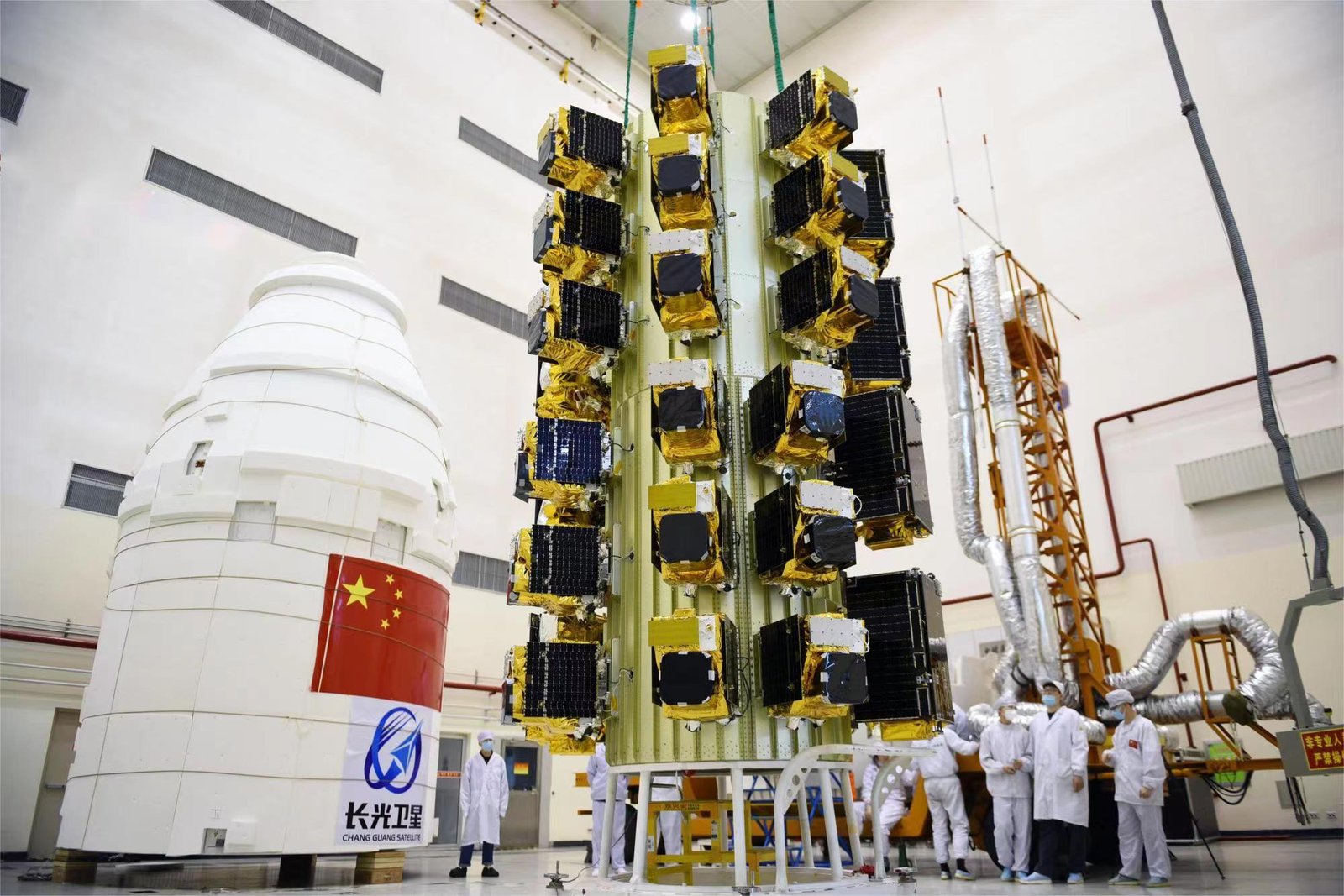The “HKUST-FYBB#1” multispectral optical satellite will be utilized to monitor remote sensing information about the environment, natural disasters, and sustainable development.

A multispectral optical satellite will be launched by Chang Guang Satellite Technology Company Ltd. (Chang Guang) and the Hong Kong University of Science and Technology (HKUST) this Friday, August 25, from the Jiuquan Satellite Launch Center in Gansu.
The “HKUST-FYBB#1” multispectral optical satellite will be utilized to monitor remote sensing information about the environment, natural disasters, and sustainable development.
The launch of multispectral optical satellite represents HKUST’s first step toward developing a remote sensing satellite constellation as well as a complete environmental monitoring and catastrophe forecasting system. HKUST is the first institution in Hong Kong to launch a satellite mission.
The most cutting-edge kind of civilian satellite is the multispectral optical satellite, which is scheduled to launch this Friday for research reasons.
The 0.5 metre spatial resolution of the remote sensing data it gathers is 20 times greater than the publically available data of photographs obtained from the European Space Agency’s optical satellite Sentinel-2. Its imaging swath, which is more than 150 kilometers, is equivalent to that of the newest terrestrial satellites from the United States.
In order to monitor surface conditions, model landslip disasters, and simulate societal responses, the satellite will use gathered data to create a digital twin system that covers all slopes in the area. Enhancing decision-making and coordination in disaster response and management is the goal.
The first commercial remote sensing satellite firm in Mainland China, Chang Guang, and HKUST have entered a long-term partnership agreement for the purpose of working together on satellite research and development for the purpose of analyzing carbon emissions.
Utilizing scientific research, meteorology, oceanography, and environmental protection accomplishments, HKUST and Chang Guang are working together to establish an extensive environmental monitoring and disaster predicting system.
The system intends to assist the nation’s carbon policy objectives of reaching carbon neutrality by 2060 and peaking emissions by 2030.
In order to identify and comprehend the Earth’s ecology and resources, it also attempts to improve remote sensing technology, which gathers electromagnetic radiation data from space or higher altitudes on Earth’s surface. The 108 orbiting satellites of Chang Guang will be used to construct the system.
Mr. Francis YIP and Mrs. Catherine YIP spoke in favor of the satellite launch and emphasized the work being done by HKUST to advance aerospace technology in Hong Kong. They pledged to promote HKUST and innovation in Hong Kong and acknowledged that this initiative marked an important turning point in the city’s aeronautical growth.
They conveyed their thanks to Prof. LIU Yuyi for calligraphing the satellite’s name. The Hongkongers are pleased to contribute to this effort and proud of the development of their city.
Prof. Harry SHUM, the chairman of the HKUST Council, thanked Mr. and Mrs. Yip for helping to start a remote sensing satellite program to address difficulties with global carbon emissions.
The council wants to work with the government, academic institutions, businesses, and a variety of industries to put the information from Chang Guang to use. They are committed to sustainable development and feel that this partnership will help the country achieve its dual carbon policy objectives, the government’s carbon emissions targets, and the slowing of global climate change.
Prof. Nancy IP, president of HKUST also thanked Mr. and Mrs. Yip and urged scholars to take part in exploratory, socially significant research initiatives to tackle global issues including climate change and natural catastrophes. She exclaimed her delight at the prospect of working with Chang Guang to advance aerospace innovation and advance the agenda for national growth.
In order to enhance the aerospace sector and meet the country’s two carbon policy objectives, HKUST will make use of its research strengths and encourage collaboration between the academic, research, and industry sectors.
A strategic cooperation agreement between Chang Guang and HKUST was formed to enhance cooperation in the production of research satellites and the use of remote sensing data.
The agreement intends to foster collaborative aerospace sector growth in the Mainland and Hong Kong, increase remote sensing data service capabilities in Hong Kong and the Greater Bay Area, and cooperatively build satellites for monitoring greenhouse gas emissions. The collaboration intends to make use of Chang Guang’s satellite manufacturing research and development capabilities.
Prof. WANG Yang, vice president for institutional advancement at HKUST, announced the launch of a satellite that would be part of a large network of remote sensing satellites. The effort intends to create sophisticated multimodal spatial remote sensing technologies, such as data processing and carbon monitoring systems.
In line with the nation’s dual-carbon strategic aim, the satellite will offer services for disaster management, the creation of smart cities, and the management of sustainable resources while also setting the standard for environmental monitoring satellite remote sensing technology.
The research group from HKUST, lead by professors ZHANG Limin and Su Hui, will work with Chang Guang to create high-resolution optical satellites and essential technologies for tracking carbon emissions.
In order to achieve the nation’s dual-carbon strategic goal, the team will take the lead in developing remote sensing technology for environmental monitoring satellites and supplying scientific data for macro-level decision-making on energy conservation, emission reduction, and other related issues.